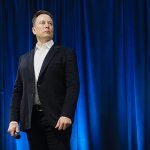The United States must prioritize deploying nuclear power to counter Russia and China and compete globally.
President Donald Trump made his fortune by driving construction pilings in the ground, not pondering the physics of how that happens.
This focus on building things needs to be extended to U.S. nuclear energy deployment if the new administration’s professed desire to Unleash Commercial Nuclear Power is going to become a reality at home and abroad.
America’s Nuclear Commitment
America’s nuclear energy commitment was jump-started under the first Trump administration, and it ignited bipartisan support that has been sustained and amplified through the Biden years. There were almost ninety nuclear power-related bills considered in Congress from 2017–2025, and many became law.
This led to a tsunami of research and development funds from Congress for the exploration and demonstration of next-generation small and advanced nuclear reactors that, in concept, can slingshot the United States back on the top of the global nuclear energy market, a position it once held and let lapse.
But much of this spending is focused on reactor research and development, which is typical of the way the executive branch has managed nuclear power for the past several decades. The research is essential, but it can’t constitute the top priority at this point.
Deployment needs to be elevated on the priority list, as it has been a secondary consideration for too long.
It is laudable that funding is being applied to restarting uranium enrichment for nuclear fuel in the United States and that legislation requires the regulatory process to operate more efficiently. Both can streamline the pathway to deployment. But the reality is that there are no new reactors in the United States under construction, and deployment planning is quite fuzzy.
Developing a Deployment Strategy
A letter to the new Energy Secretary, Chris Wright, from the American Nuclear Society (ANS), asked the key question—“Will operating prototypes be enough to kickstart a full on commercial build-out? Nobody knows for sure.”
But after six years and billions of dollars of American investment, the answer to this question should be much more definitive.
This uncertainty is going to have to clarify quickly if there is any chance of achieving the Biden administration’s commitment to deploy 200 gigawatts (GW) of new nuclear capacity by 2050, with an interim target of thirty-five GW of new capacity by 2035.
Some stars have begun to align in America’s quest for this goal.
The United States has been successful in selling large Westinghouse AP-1000 reactors to Poland and Bulgaria, with other Eastern European markets in its sights.
The United States and its allies have aggressively recommitted to the nuclear fuel supply business.
The AI boom is driving technology companies to embrace nuclear energy as a scalable, continuous source of clean energy for their power-hungry data centers.
But there are a myriad of impediments to nuclear expansion that need creative solutions.
Competing with Russia and China
Further, there are global stakes. And the United States must compete much more effectively with Russia and China across multiple reactor platforms and fuel cycles to be relevant to the future global nuclear market. According to ANS, “China is running circles around us in new builds [and] Russia has the best ‘zero money down’ offer on a nuclear reactor in the world.”
Both of these countries provide substantial state financing for their civil nuclear industries, are deploying new reactors at home, and operate hot industrial and academic production lines for materials and trained personnel.
They also have substantially deeper energy and infrastructure ties than the United States does with developing economies that may be interested in emerging small reactors.
Any real effort to shake the structural advantages of Russia and China is going to require smashing some crockery in the research-centric U.S. nuclear energy bureaucracy, and that will send tremors through an American nuclear ecosystem that is often considered hidebound.
Clearly, the United States is in a technology competition with China, and nuclear power is one facet of that contest. While China is racing ahead with domestic nuclear deployments, once that is done, it may turn more forcefully to trying to dominate the international nuclear market.
Despite concerns about how the Trump administration is dealing with the war in Ukraine and whether this indicates a tilt toward Russia, it would be remarkable if the president and his team viewed Russia as a partner rather than a competitor on the global nuclear energy playing field. There is little economic value that would be created in the United States in such a partnership, and Congress may be inclined to stop it before it starts.
This provides the United States an important but short window for supercharging its nuclear power deployment strategy. The goal should be to build domestic reactors, cultivate markets abroad for all types of reactors, and minimize Russian and Chinese influence in the global nuclear market.
A Temporary Department of Nuclear Deployment
One approach to overcoming the inertia is to work with Congress to temporarily authorize a “Department of Nuclear Deployment” that draws in special governmental employees knowledgeable in finance, law, and large-scale construction, plus the best that the traditional government agencies have to offer.
It can be housed and funded by the Department of Energy and directed by a dedicated senior official in the White House. The goal should be to get beyond the nuclear research business and into the deployment business. It should include timelines, metrics, efficiencies, supply chain development, and international partnerships to put new electrons on the grid by 2035.
One of the challenges faced by the first Trump administration and during Biden’s term is the disaggregated structure for making nuclear energy policy decisions and the resultant inability to develop a cohesive national strategy.
Multiple agencies and issues are involved, often with competing bureaucratic and issue imperatives. The national laboratories are also major players in this process and have their own equities and priorities. Sincere efforts to unite this fractured system have never really borne fruit, in part because the bureaucracy was asked to organize itself.
The Silicon Valley (SV) technology ethos that seems to be pervading the new Trump administration could be helpful in this process because radically remaking companies and institutions is an SV trait. But it can’t heedlessly slash and burn just to announce its presence.
There is a clear set of goals that need to form the core of this deployment department.
The first is assured financing. The financial commitment to nuclear power’s expansion is weak because private finance is not going to strongly come on board nuclear expansion without support and risk reduction from the U.S. government. Some of what is necessary is already in place and should be preserved. But more government financing is going to be necessary for domestic deployment and exports.
The financing will not work unless there are markets that are identified, cultivated, and synced. The hyperscalers’ interest in nuclear energy is positive, but the timing of the availability of the small reactors that interest them could be out of sync with the technology’s maturity cycle. Cost will also be a factor when natural gas could be a dirtier but cheaper alternative.
Similarly, overseas, the markets for small reactors are mostly outside of the OECD and are developing economies with small, disaggregated grids and little in-depth nuclear knowledge. Russia provides operators for reactors it exports if necessary. China will follow suit. Can the United States and its allies match this advantage? That’s probably going to require a Build-Own-Transfer strategy. And that will require U.S. government support.
To accelerate the march to market, the nuclear regulatory system will need to adjust. Congress has mandated this, and some important reforms are underway. But the exotic fuel cycles of several key next-gen reactors will tax the regulators and require new approaches and adaptations. That could delay reactor approvals if not handled deftly. Since safety is such a critical nuclear issue, the administration should engage with the regulators in the spirit of cooperation to move the deployment process forward more efficiently.
Finally, there is supply chain development and cooperation with allies. In spite of the rhetoric around international tariffs and markets, the reality is that the United States needs to pursue a two-pronged approach to the nuclear power supply chain. One is to build more capacity at home. That will take time and a reactor order book. The other is to better align with allies. A strong coalition will include the United States, the United Kingdom, Canada, France, Japan, and South Korea.
U.S. reactor vendors are already highly dependent on South Korea, but the two are arch-rivals for reactor projects. A model for cooperation that accommodates competition needs to be developed. This is a prime subject for a nuclear energy summit of the six nations. It can be hosted by the president and should appeal to his interest in a technological advantage over China, international deal-making, economic advancement at home, and energy dominance abroad.
Kenneth N. Luongo is the president and founder of the Partnership for Global Security (PGS) and the Center for a Secure Nuclear Future.
Image: Denton Rumsey / Shutterstock.com

















